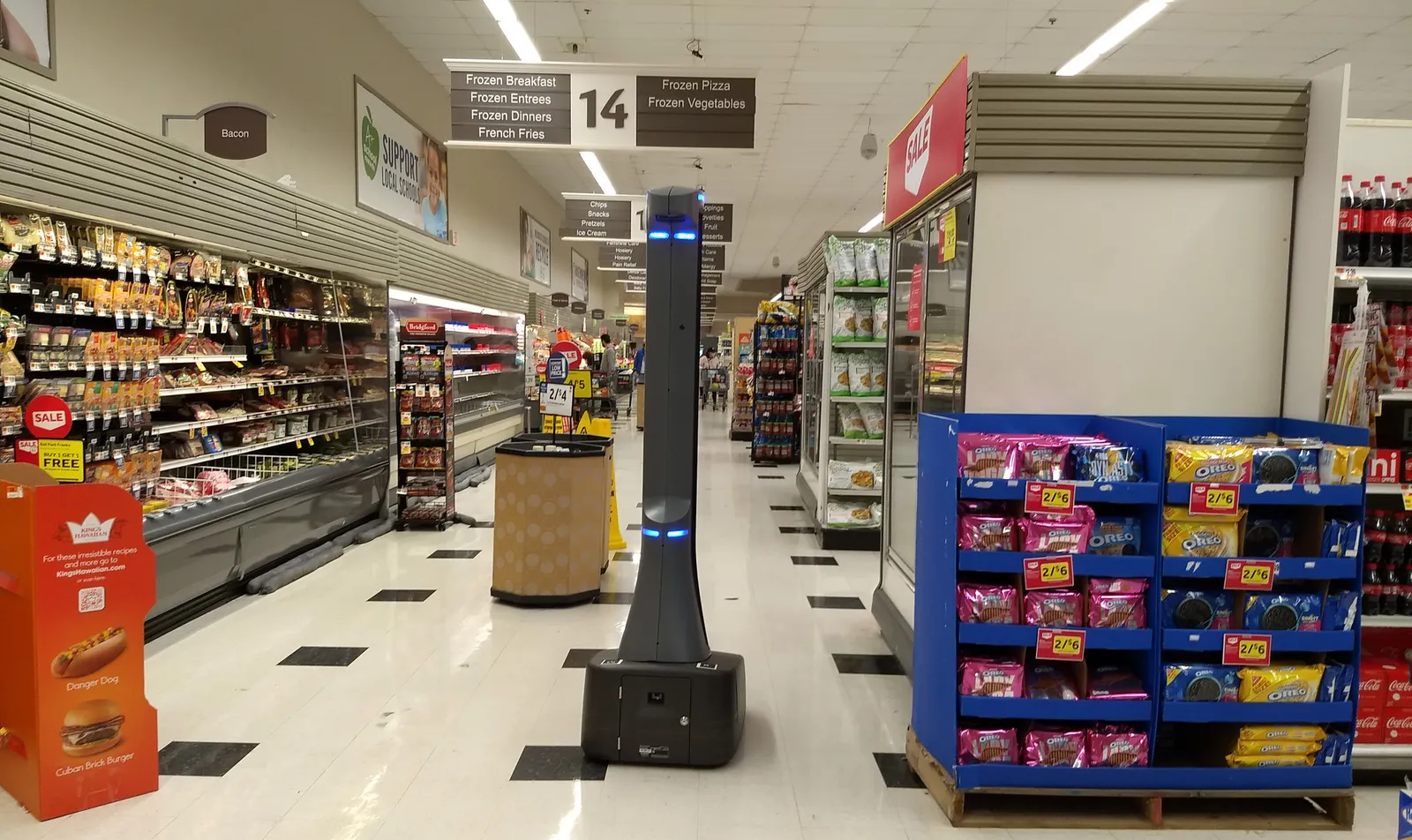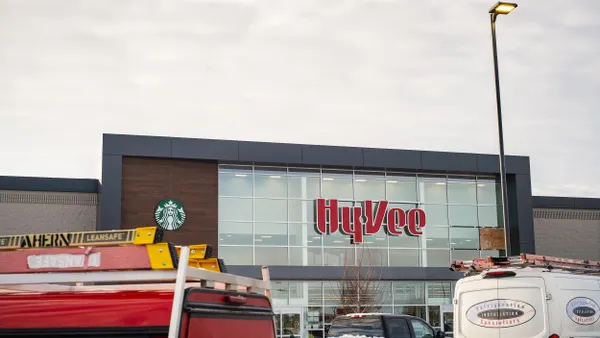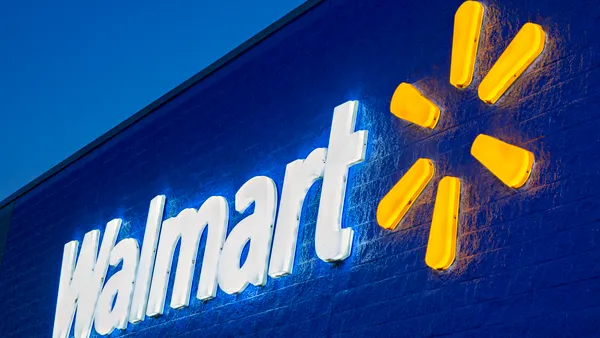From conversational AI software for associates to wearable robotic “exosuits” for its distribution center workers, Ahold Delhaize’s U.S. business doesn’t shy away from embracing new technologies.
At the center of all this digital innovation is a massive, ever-growing amount of data, which poses opportunities for deeper consumer insights but can also become a big headache for grocers and CPGs to collect and analyze. But Ahold Delhaize USA, which oversees six U.S. retail brands, has been tackling that challenge through a combination of in-house solutions and vendor partnerships, said Rom Kosla, chief information officer and executive vice president of IT for the company’s services arm, Retail Business Services. The U.S. arm also has the added benefit of being able to watch and learn from the digital innovations tested by its Dutch parent organization.
Kosla, who oversees all aspects of IT for the U.S. side of Ahold Delhaize, joined the company in 2021 with a focus on supporting the company’s omnichannel ambitions.
A food retail veteran with IT experience at PepsiCo, Deloitte Consulting and Nestlé, Kosla said he knows the challenges food brands can have with making sense of third-party data. Ahold Delhaize is “more advanced” compared to other grocery companies, he said, in supplying brands with the data and insights to unlock a better understanding of consumers and what they are buying.
Grocery Dive met up with Kosla earlier this month during the National Retail Federation’s annual show in New York to talk about how Ahold Delhaize USA’s supply chain transformation is going, which technologies stand out and how the company is confronting labor challenges impacting the grocery and tech industries.
This interview has been edited for length and clarity.
GROCERY DIVE: How is the process going with bringing your supply chain network in-house?
ROM KOSLA: So far, so good. We've been focused on really in-sourcing our supply chain and I would say that that's been moving pretty fast. We're seeing huge synergies with that happening. From a [third quarter] perspective, our sales have grown. We still have a few distribution centers we're still implementing, some of our cold facilities. We should be 100% done by this year, but really a lot of front-loaded [work will be done in the] first half of the year.

Tell me about your replenishment and forecasting software.
We’ve implemented more advanced forecasting and replenishment. We’re leveraging technology, Relex — it’s on the cloud — so we go and pump a lot of data that’s tied to our current inventories and where we’re depleting in our stores and then we start to do a forecasting model. That’s been successful. Now, the challenge, obviously, is the size and scale of our data. We’re talking hundreds of thousands of SKUs depending on the type of stores and the size of stores.
And then we always talk about other complexities. When you look at trends-specific data, can you really rely on the last two years as a potential trend [indicator] for the future? So we have to have an eye on what the data tell us and whether or not we can index it or whether we need to provide more variability. But that’s been a big part of our strategy.
We stood up an agile product scrum team and those have been really successful and the engagement with the business is fully integrated.
Can you speak more about how your team handles collecting, cleaning and analyzing the massive amount of data you have?
We have a platform we built in-house called Fiona where we collect the data. The data itself is in the cloud. We feed all our point of sales systems, our loyalty systems, our e-commerce sales [into Fiona] and that gets churned into insights. We have data scientists on both the IT side as well as on the business side to really make sense of it.
We have petabytes of data that constantly is pulled into a central system. But we have exabytes of data that transact between our store systems, our online systems, our data centers and also on the cloud. So the amount of data flowing back and forth is significant.
Coming from a CPG company — PepsiCo had a significant amount of investment in data analytics and a lot of data scientists — it was always still third-party data and trying to make sense out of the data that other grocery businesses had. Here [at Ahold Delhaize USA], we have a significant amount of detail about the type of consumers that are going into our stores and the type of products that they buy, and so that's been really more advanced than I've seen other companies have.
Why is the cloud such a key component to not only your business but also for grocers looking to scale their operations?
Most businesses have seasonality factors, like the Super Bowl or holidays. With traditional IT, if you had a data center, you would buy compute capacity based on what you think the peak would be. But during times in the month, you pay for idle resources that aren’t being used. When you move things to the cloud, you have elasticity of certain aspects like data and bandwidth.
What we’re doing is we’re moving a significant amount of our e-commerce platform solutions into the cloud for burst-able type of demand. That’s really a big part of how we believe we’re going to continue to drive that because it doesn’t make sense for us to buy hardware that takes months to procure, install, set up and then only hit the demand for a certain window and then watch the asset stay idle.

Often there’s a mainstream perception that grocery employment is limited to store clerks or cashiers. Coupled with recent tech job woes, how do you approach attracting and retaining tech talent?
We are a grocery business, but technology is a foundational part of how we run our business. We’ve invested in really modern technology. When you think of our e-commerce business — a lot of businesses have chosen not to build their own [e-commerce business] in-house, and so they lose that customer insight — whereas we have that vertical integration as part of our technology stack.
We have a successful Co-Op Program [for students] — and those have strong conversation rates where they become employees. Word of mouth is obviously an important part. Our business internships are great. It’s because we’ve invested the time in the schools that we’ve worked with.
The technology space, in general, is challenged with trying to hire as many people that they need. Our unique proposition is people understand our engagement with our customer — it’s one of the most intimate parts of what I would say is our value proposition.
We do apply new technology capabilities. What students are learning in the university, they're applying it within our space, because it's not like we have just one set of technologies. We have actually a whole spectrum of technologies that is interesting. We do have still legacy technology that we have to modernize, which occurs with most companies, but that’s also exciting because it’s [switching to] a new platform, new possibilities.
Which grocery tech innovations are catching your eye at the NRF show?
There’s a lot of things around store operations that’s interesting. We’re piloting electronic shelf labels, for example, and that’s one of the main areas we believe might have opportunities to potentially scale.
There's technology we have around planogram compliance that we’re implementing to drive more insights around how we’re doing with our stores.
The technology that I’m looking at and seeing is around bandwidth and security. [With increasing digital additions at the store level], every single one of these locations is going to require more bandwidth. We’re looking at access points.
But really, when we were looking at technology, we're working with our business partners with vetting it out. IT doesn't have the sole responsibility [of choosing] technology. It's really our business partners and us working through: “What makes sense for the store? What makes sense for distribution centers? What makes sense for our corporate office?” And then also understanding: Are these companies viable to scale?
Some retailers — prominently Walmart — are growing their B2B services. As you build solutions in-house, how is Ahold Delhaize USA thinking about opportunities to offer up its solutions to other retailers?
We have [nearly three dozen] independent stores that we provide services for. We have an agreement [through which] we would leverage our technology or point of sale. That independent capability is something we’ve been doing for the past several years... We haven’t really scaled that and we’ve had ideas, but it’s not something that is our primary purpose. But it is an available capability that we have.












